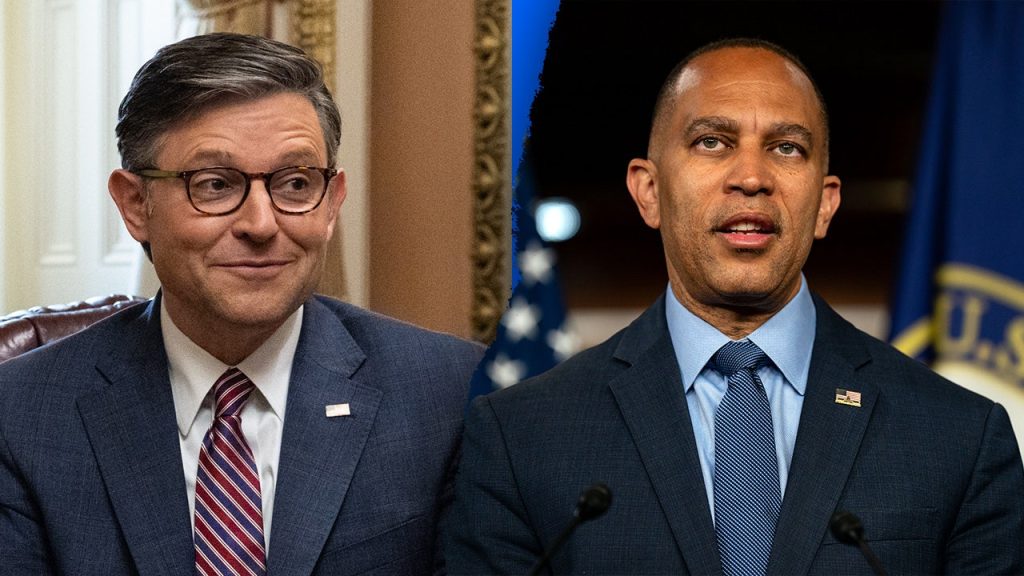As the deadline for government funding approaches, tensions between Democrats and Republicans in Congress are rising amidst concerns of a potential partial government shutdown. With political rhetoric intensifying, leaders from both parties are preparing to place blame on one another while attempting to secure a funding agreement. Negotiations are currently underway, but divisions remain as both sides weigh their priorities against the impending crisis.
| Article Subheadings |
|---|
| 1) Overview of the Funding Crisis |
| 2) Key Players in Negotiations |
| 3) Republican Strategies and Proposals |
| 4) Democratic Responses and Concerns |
| 5) Implications of a Possible Shutdown |
Overview of the Funding Crisis
With a looming deadline, the federal government is at risk of running out of funds, situating Congress in a precarious position regarding its budgetary responsibilities. As of now, federal funding is set to expire on March 14, prompting urgent discussions among lawmakers. A significant focus is on whether Congress can agree to a continuing resolution (CR) that would temporarily extend last year’s funding levels. This funding impasse has led to increasing animosity between party lines as elected officials brace for a potential impasse.
Key Players in Negotiations
Central figures in the ongoing negotiations include House Speaker Mike Johnson and House Minority Leader Hakeem Jeffries, whose roles are crucial as they represent the interests of their respective parties. Meanwhile, House Appropriations Committee Chairman Tom Cole has also emerged as a key voice within the Republican caucus, articulating the party’s resistance to certain Democratic demands. Efforts from both sides are highlighted by tense exchanges and public statements criticizing each other’s commitment to funding agreements.
Republican Strategies and Proposals
Current discussions among congressional Republicans indicate a movement toward passing a short-term extension to maintain government operations. This proposed continuing resolution would potentially incorporate adjustments to align with priorities championed by former President Donald Trump. Defense-related expenditures are also anticipated, aimed at addressing concerns from conservative lawmakers who advocate for military readiness. The plan, however, appears contentious as Republicans face internal demands, setting the stage for disagreements over how to move forward.
Democratic Responses and Concerns
Democrats, on their part, have expressed frustration with Republican proposals, arguing that they require more comprehensive measures to avert a shutdown. Key Democratic negotiators have accused Republicans of abandoning bipartisan dialogue, thus increasing the likelihood of a funding crisis. Senate Minority Leader Chuck Schumer has openly criticized GOP efforts, stating that the focus should shift to supporting American families rather than appeasing wealthy donors. The pressure is on Democrats to prepare adequate responses that safeguard their interests while navigating an increasingly polarized environment.
Implications of a Possible Shutdown
Should Congress fail to reach an agreement before the deadline, millions of Americans may face disruptions in government services. A partial shutdown could impact everything from public safety measures to social service provisions, with vulnerable populations potentially experiencing the brunt of any coordination failures. Both sides are already preparing strategies to attribute blame, which will dominate the political narrative in the days following March 14. Public sentiment towards government effectiveness could also wane, pressuring lawmakers to reconsider their negotiation tactics.
| No. | Key Points |
|---|---|
| 1 | Congress faces a potential government shutdown if a funding agreement is not reached by March 14. |
| 2 | Republicans aim to pass a continuing resolution that aligns with former President Trump’s priorities. |
| 3 | Democrats accuse Republicans of walking away from bipartisan negotiations to fund the government. |
| 4 | Both parties are positioning to blame each other should a government shutdown occur. |
| 5 | Potential disruptions to government services may significantly affect American families and vulnerable populations. |
Summary
The impending government funding crisis underscores the existing tensions in Congress as both parties grapple with political and fiscal responsibilities. With a possible shutdown on the horizon, the stakes have never been higher for negotiations as lawmakers must navigate complex party dynamics while also addressing the needs of their constituents. The outcome of this situation will significantly impact not just governmental operations, but also the livelihoods of countless Americans who depend on these services.
Frequently Asked Questions
Question: What is a continuing resolution (CR)?
A continuing resolution (CR) is a type of legislation used by Congress to fund government agencies temporarily when there is no formal budget in place. It allows for the continuation of government operations at existing funding levels until further agreements are reached.
Question: Why are both parties blaming each other for the shutdown?
Both parties are positioning themselves to deflect responsibility for a potential shutdown. This blame game arises from differing priorities and negotiations that have stalled, with each side accusing the other of failing to reach a suitable agreement for funding the government.
Question: How could a shutdown affect American families?
A government shutdown could result in the suspension of various public services, affecting programs such as Social Security, veteran services, and federal employee salaries. This disruption can have far-reaching implications for families reliant on these services for financial stability and essential support.
